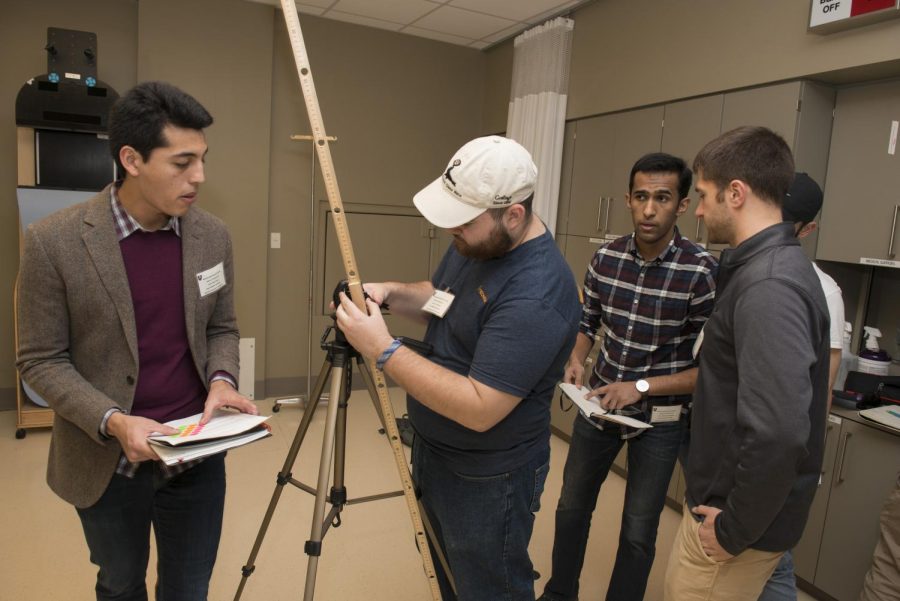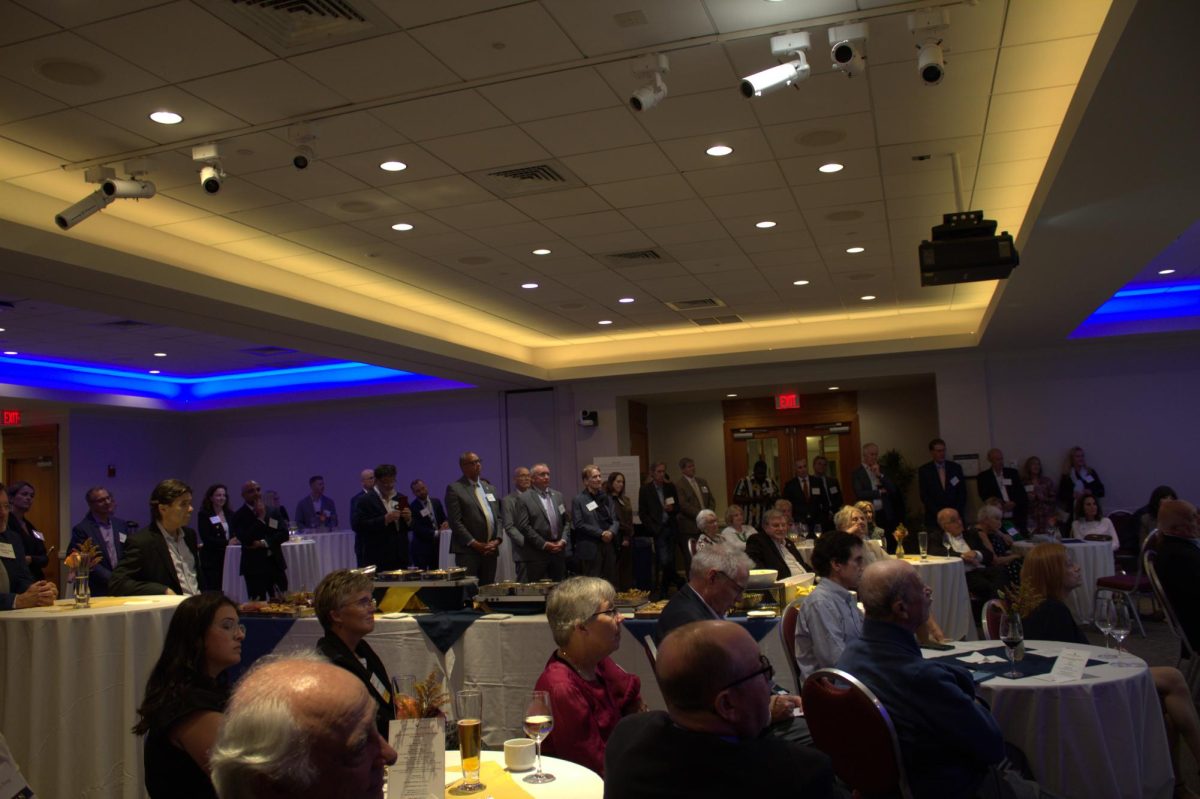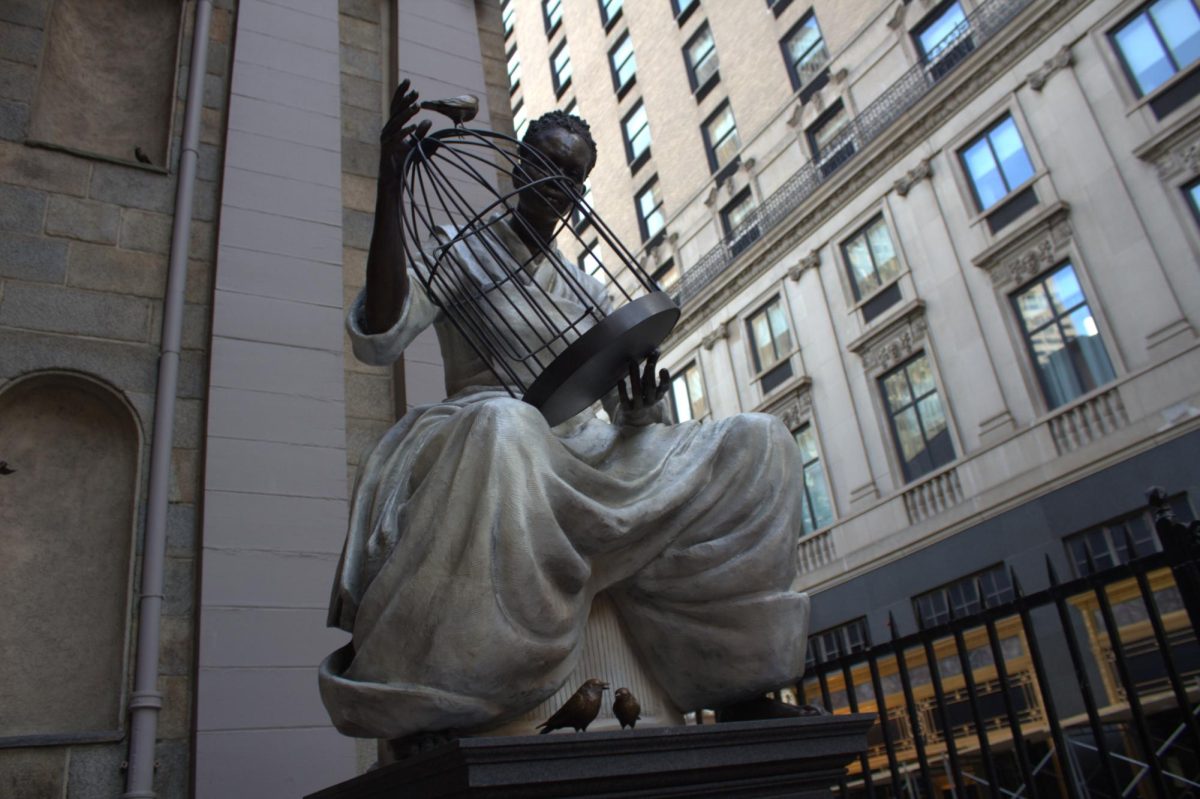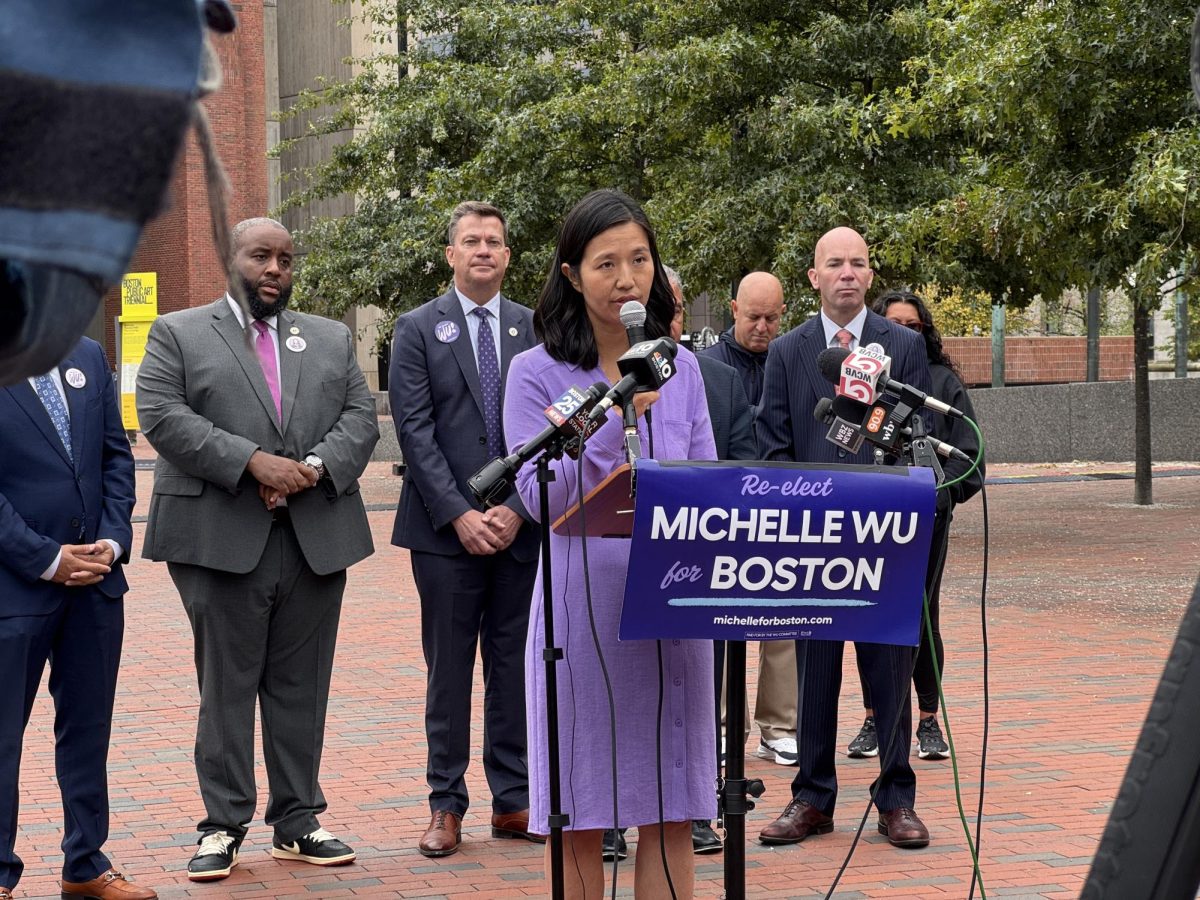Students of Suffolk’s Physics Department are forefronting an ongoing mission just like Armstrong through the group’s astronomical research at Mass General Hospital (MGH) in the Clark Center for Radiation Oncology. With the aspiration to safeguard astronaut space travel, the students have challenged one of the most significant issues for astronauts in outer space: radiation. Using methods that could eventually be adapted for the shielding of space radiation, students have been performing measurements to determine the radiation dose from neutrons using equipment also used for the treatment of cancer patients.
Originally proposed as the “Mars Mission Radiation” project, the name switched to the “Suffolk Neutron Scattering Project” once it was determined that Mass General’s equipment could be used as a radiation source, an essential component for the group’s research on neutrons. The project started from scratch when four senior physics majors set out to search for specifics on radiation The group’s inquiries about Mars focused on the Mars project, NASA’s goal of establishing human settlement on Mars in the 2030s. One of the major concerns through this ongoing endeavor has been radiation exposure and planetary rovers have been sent out for decades to gather radiation data to help protect future astronauts
The physics project at MGH was influenced by Paul Johnson, a McNair Scholar and aspiring radiation engineer. Johnson’s pinnacle level of inspiration behind this major complication of space radiation not only established his senior project, but also lead the physics group to be one of the first Suffolk physics students (outside of the clinical dosimetry students) to research at MGH.
Johnson, a nearly six-year veteran of the U.S. Army as an Army Airborne Infantryman for Long Range Surveillance, said that his passion for space radiation developed during his time at Suffolk when Dr. Johnson told his freshman-level class about the book “The Martian.”
“It’s [radiation] the most dangerous part of it and if you want people to want to go to space and explore and colonize and what not, you have to make it safer,” said Paul Johnson.
Having an interest in renewable energy toward the end of his time in the army, he also realized the lack of political and economic involvement towards technology and decided that he wanted to focus on space. His personal investigation for space radiation began a year and a half ago when he proposed the project and started researching more about the Mars project, radiation and making space safer.
“I realized that space exploration and putting a colony of humans on Mars is kind of a way to show everybody that we’re all the same species…and it’s a sort of project where everybody is going to be able to come together,” said Paul Johnson.
In what began during the fall 2016 semester, the Suffolk physics group’s research at MGH officially began last summer in June. Dr. Walter Johnson, head of the physics group at Suffolk, made the team’s research possible by connecting with MGH Medical Physicist and adjunct faculty within the Suffolk Radiation Science, Dr. David Gierga, and Jacky Nyamwanda, Medical Dosimetry Education Coordinator for Suffolk University.
“If we were out in the middle of nowhere, this wouldn’t be happening, but we’re down the street from arguably one of the best hospitals on the planet,” said Dr. Johnson.
Senior Mario Rojas, a project leader along with Paul Johnson, said that his affinity for carrying out his type research is the teamwork and team building involved.
“I think one of the aspects that really got to me was the team effort and one of the human aspects of bringing us together as a department, working on a common goal,” said Rojas.
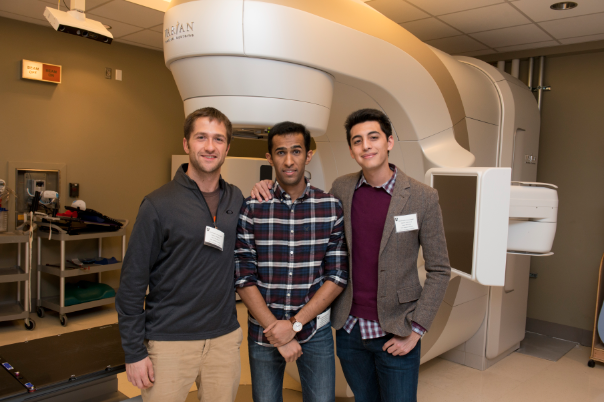
To prepare for how they would conduct the project at MGH, various scientific papers were read about the medical machinery they would be working with. Students were also trained in radiation safety by Jacqueline A. Nyamwanda, Educational Coordinator for the Suffolk Medical Dosimetry program.
“It was almost like starting from scratch because we didn’t know much about it.” said Paul Johnson.
Before even considering MGH as a means to conduct the proposed research topic, Johnson said that the major challenge was figuring out how the project would be carried out.
“The worry was, okay, if we want to measure something, how are we going to do it? You need a neutron beam if you’re studying neutrons. Where are you going to get neutrons?” said Dr. Johnson. “That’s when I went over to MGH and asked them if we could use their machines when they’re not being used for treatment.”
The physics group was granted access to use a linear accelerator (LINAC) as the radiation source. The LINAC is used in a way that generates neutrons, and measurements have been performed to map the neutron dose within the LINAC room.
Senior Allen Alfadhel, believes that this radiation experiment is by far the best, due to his past experience in several research projects during his sophomore year.
“It’s the most involved in physics and the most complicated. It has the computer part which I like and it has the physics part which I also like and then art as well. It’s like the things I’ve been studying and have been practicing all my life really,” said Alfadhel.
Alfadhel’s primary role within the project is design of apparatus for the detectors and helping to determine the actual spectrum of the high energy particles.
Along with the facilitation of Gierga and Nyamwanda, the physics group has the privilege of using, one of two LINACS at MGH that produce the highest energy (15 million electron volts (MeV)) necessary for creating the largest possible number of neutrons. The MGH partnership with Suffolk’s Radiation Therapy and Medical Dosimetry program for 23 years was a vital resource in making the physics neutron radiation project attainable.
Dr. Johnson suggests that limited neutron data have been published for newer linear accelerators and these measurements may be useful for the broader radiation therapy community. Jack Thomas, a junior and president of the physics club and co-director of the project, has been involved with Dr. Johnson’s research since the second semester of his sophomore year and was responsible for placement and setup of the equipment during the group’s last trip to MGH on Oct. 23.
“The thing that I like the most is that it’s completely different as compared to generic undergrad research,” said Thomas. “A lot of this research is usually done by graduate students and undergrads have very small roles in something like this.”
Torn between material sciences and medical physics in his future schooling, Thomas believes that the current research at MGH has been a major influence in developing his career path.
“It’s an experience you’re never going to get anywhere else,” said Thomas.
The group is essentially using the equipment at MGH to attain a better awareness of what goes on in the natural world, but ultimately learning about medical physics through the process.
The different methods of detection such as bubble detectors and foils, have been used to acquire a more complete idea of the neutron energy coming out of the LINAC. This strategy will give a more accurate distribution of where the neutrons are and how many are being absorbed by the material, similar to radiation experienced in space. So far, the group has used the techniques of bubbles detectors and copper foils and the group is still processing and building upon their results.
Four more students were added to the project: Jackson Nolan, Jack Thomas, Erick Bergstrom, and Molly McDonough in Fall 2017. On Oct. 23, seven of all eight members made their first trip to MGH to conduct a trial run of their experiments for their neutron radiation research project.
Once the neutron distribution within the LINAC room has been mapped, a long term project, Dr. Johnson prospects to build upon these results by designing experiments that measure the effects of different types of shielding.
The team recently received a research award of $2,000 from the National Society of Physics Students organization after Jack Thomas, Allen Alfadhel, Paul Johnson, and Mario Rojas wrote a proposal to purchase thin metal foils and other materials to continue their neutron radiation experiment.
Project managers, Paul Johnson and Rojas, who will be graduates after this semester, are now training Jack, Jackson and Eric to be the future leaders of the group. Rojas said that they want to make sure the MGH research continues to run smoothly by bringing everyone together to collaborate, making sure everyone has a contributable task, as well as training new students on techniques.
With dreams of pursuing a Ph.D. in quantum mechanics or particle physics, Molly McDonough is the first freshman and female to step into this project. McDonough said she likes to learn about the medical physics aspect of this current research and sees it as her future career field.
“It’s a lot of design and it’s absolute, pure physics. A lot of people just do simulations of things that were proven like hundreds of years ago, but we actually get to use real equipment and a real linear accelerator which is totally beyond the scope of what I thought I would be doing in undergrad,” said McDonough.
She sees no problem with being the only woman of the group and described the group as genuinely inclusive and supportive. “They’re all really awesome to be completely honest. Everyone is super cool and super welcoming. Yeah it is kind of weird being the only girl, but that’s just kind of what it’s going to be like probably for the rest of my life,” McDonough said laughing.
Dr. Johnson, Gierga, and Nyamwanda were extremely impressed with the teams’ last visit to MGH and continue to be amazed by their endeavors and unending motivation for their research.
“Watching the students take part in this stuff and get excited about what they’re doing and doing these calculations and coming in on the weekends, that’s as good as it gets,” said Dr. Johnson.
Editor’s Note: Massachusetts General Hospital reviewed this article prior to publication.


